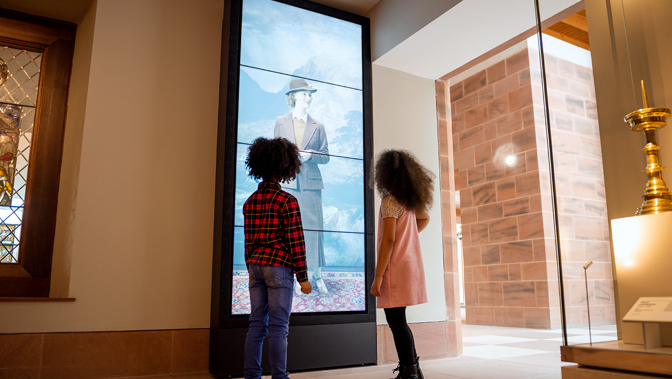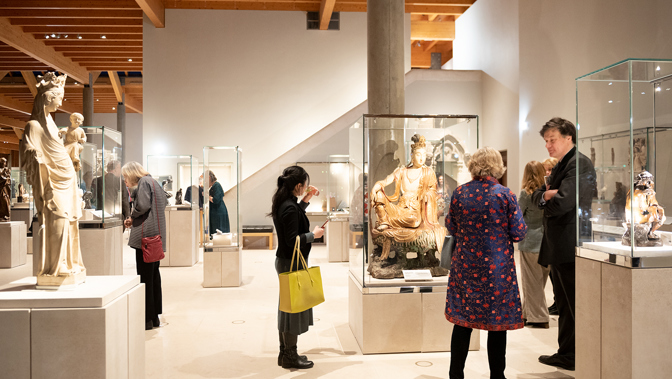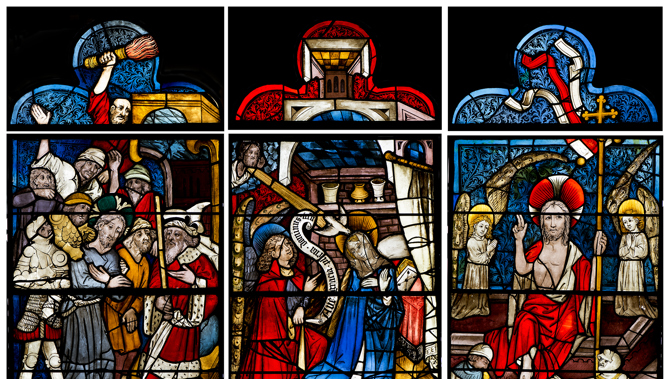Hair and Hats
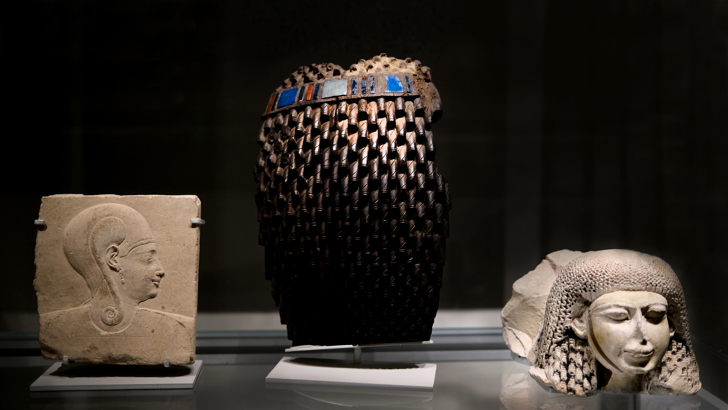
How we decorate our heads varies from culture to culture
Aphrodite, with her long hair, represented beauty to the Greeks, whilst the Persians fastened their fashionable hairstyles with intricate hairpins.
Ancient Egyptians used wigs to indicate social status. Europeans used headdresses for modesty or to show wealth.
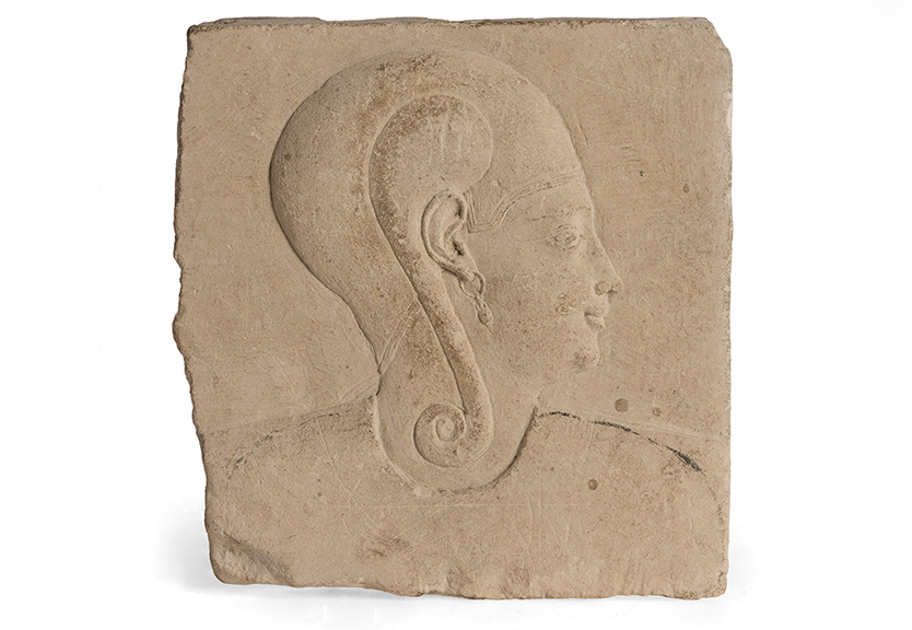
Raised relief of a prince wearing the sidelock of youth
This prince’s hairstyle with a long braid at the side is an Ancient Egyptian symbol of youth. Usually children had their heads shaved, apart from this sidelock.
Saite Period
664–525 BC
Limestone
Made in Egypt
13.31

Head of a Lady
Many rich and powerful people wore wigs in Ancient Egypt. They were made of real hair that was curled and fixed into elaborate hairstyles.
18th Dynasty
1550–1295 BC
Limestone with traces of blue pigment
Made in Egypt
13.144

Portion of a Wig
Wigs were so important that even coffins and sculptures had wigs like this one. It may have been worn by a king or a queen.
1550–1295 BC
Wood, faience, stone
Made in Egypt
13.205
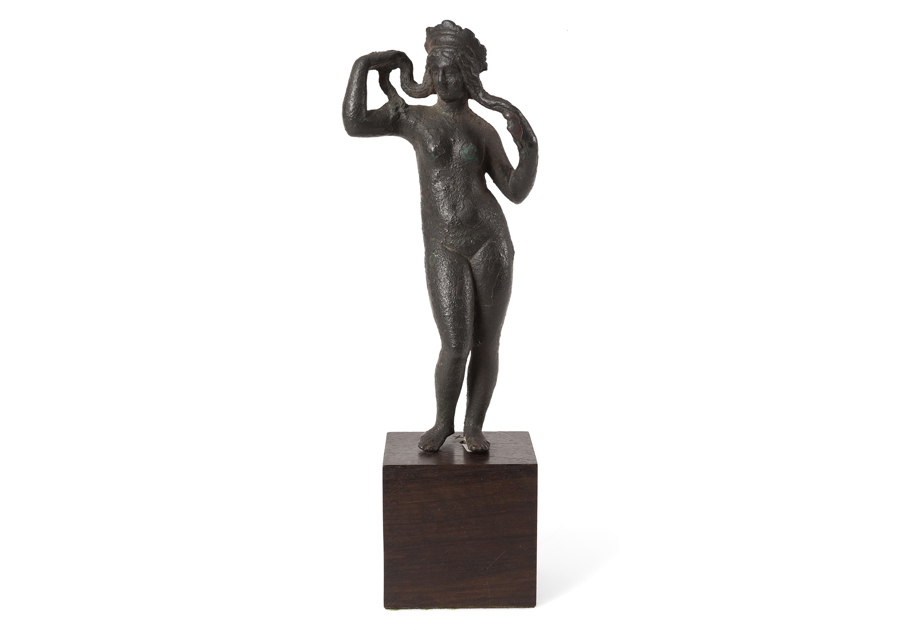
Aphrodite
Aphrodite, the Greek goddess of love, plays with her long flowing locks of hair, often used as a sign of her beauty.
About 300 BC
Bronze
Made in Greece
19.128
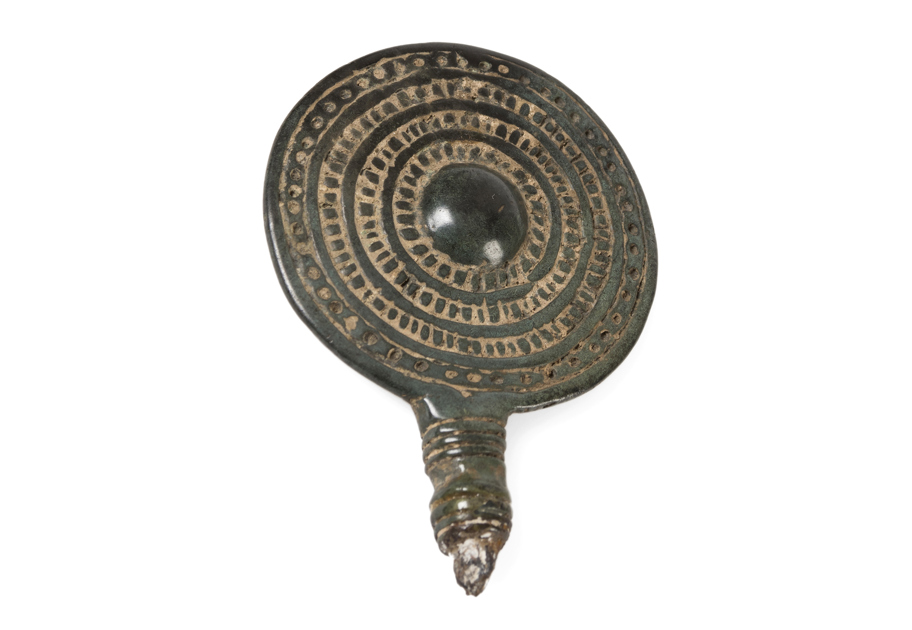
Hairpin
This hairpin used to shine brightly like gold. A long stem, now missing, would have held the owner’s hair in place.
About 800–700 BC
Bronze
Made in Luristan, Persia, now Iran
33.108
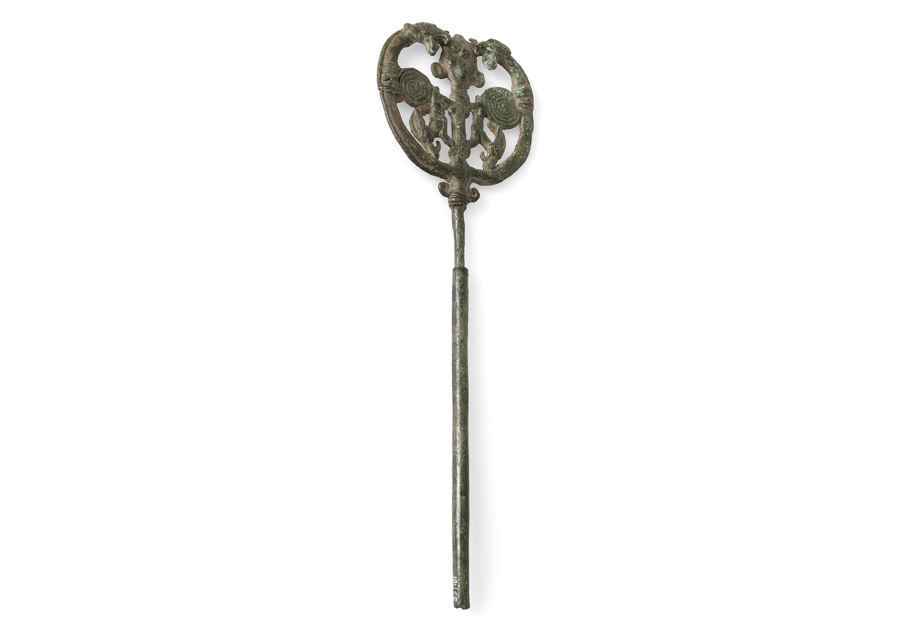
Hairpin
Hairpins were the finishing touch on a woman’s beautiful hairstyle. The top of the pin shows the Sky God defending himself against two dragon-like animals.
About 800–700 BC
Bronze
Made in Luristan, Persia, now Iran
33.181
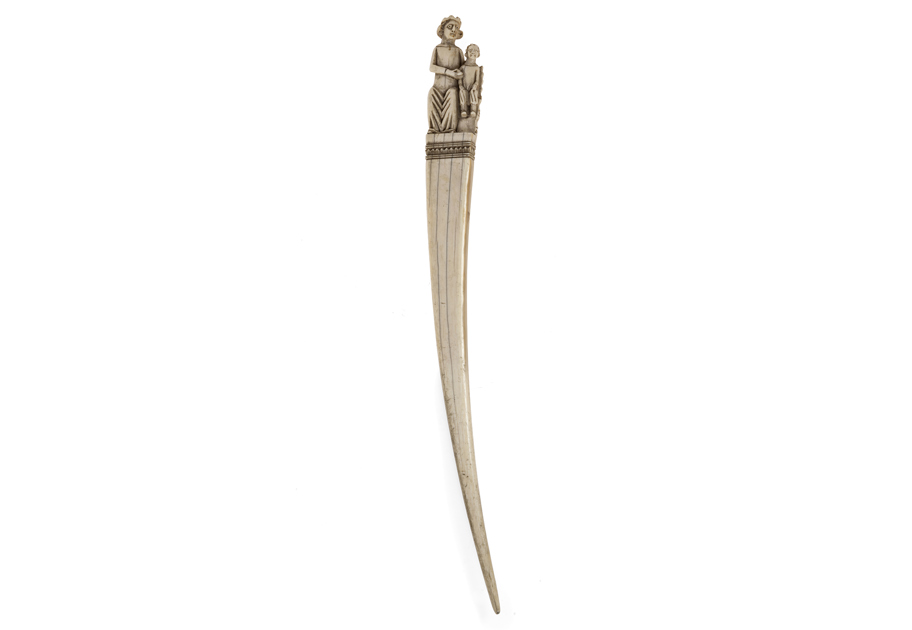
Hair parter
This hair parter was used to remove knots from long hair. Usually decorated with images of animals or lovers, this one is unusual because it shows the Virgin and Child.
About 1400–1500
Ivory
Made in Italy
21.23
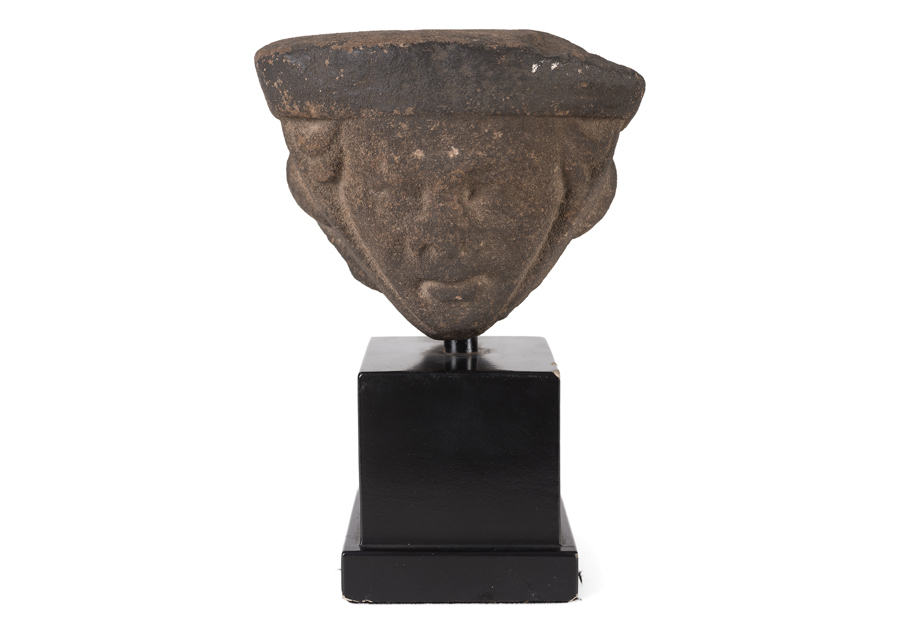
Woman wearing a wimple
Wimples were cloths worn by women to cover their necks. Originally worn by nuns, older women and widows also wore them as a sign of modesty. Some nuns still wear them today.
1275 - 1400
Stone
Made in England
44.32
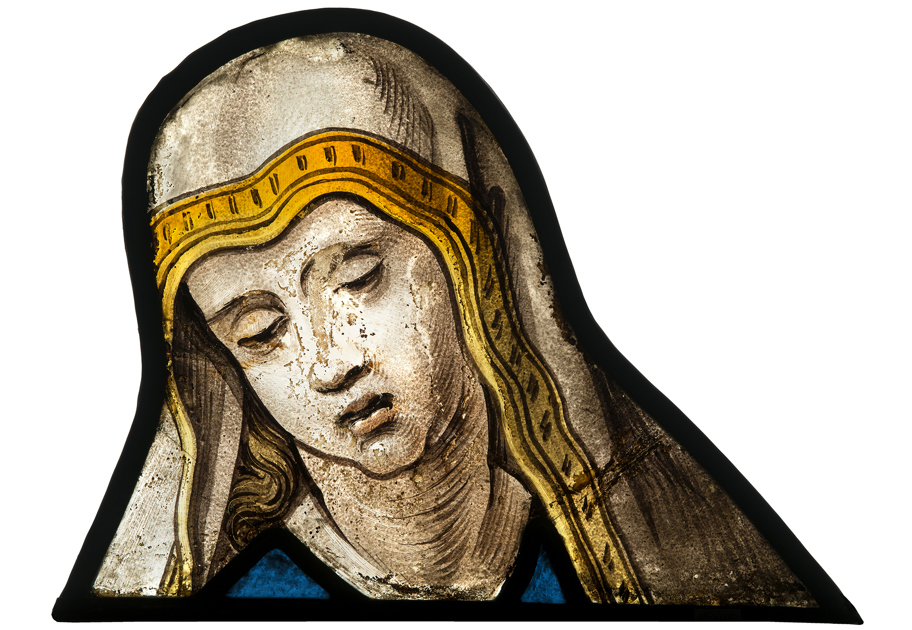
Fragment from the Virgin Mary in mourning
Historically, Christian women covered their hair like the Virgin Mary, who wears a veil to show her humility and service to Jesus. Some women continue to wear a veil in church.
About 1550
Coloured, stained and painted glass, lead
Possibly made in Rouen, Normandy, France
45.416
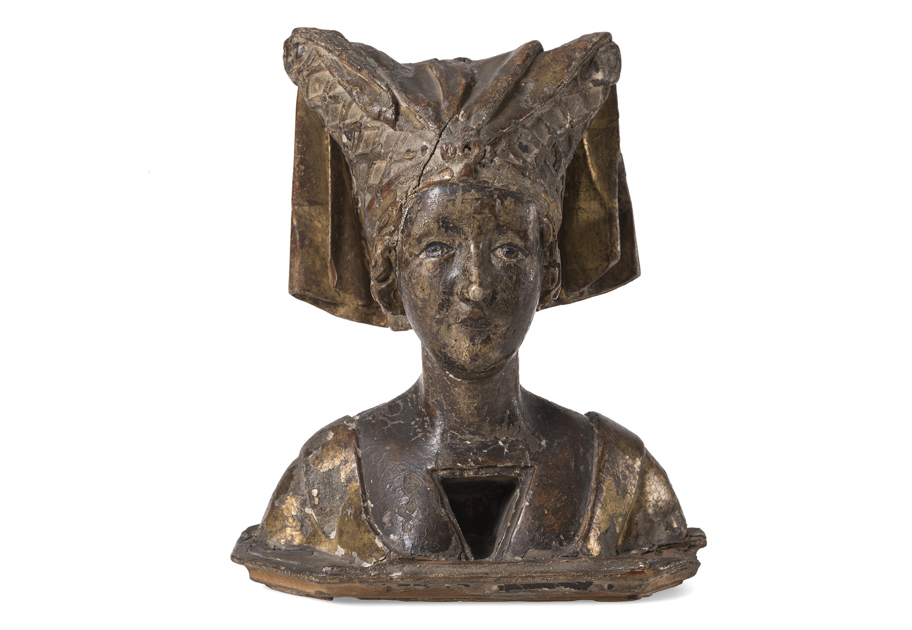
Reliquary bust of female saint wearing a divided hennin
Saints are often shown wearing fashions of the artist’s time. This extravagant headdress was fashionable for rich and important women during the late 1400s.
About 1475–1500 or 1800s
Wood
Made in Southern Netherlands, now Belgium, or Swabia, Southern Germany
50.85
